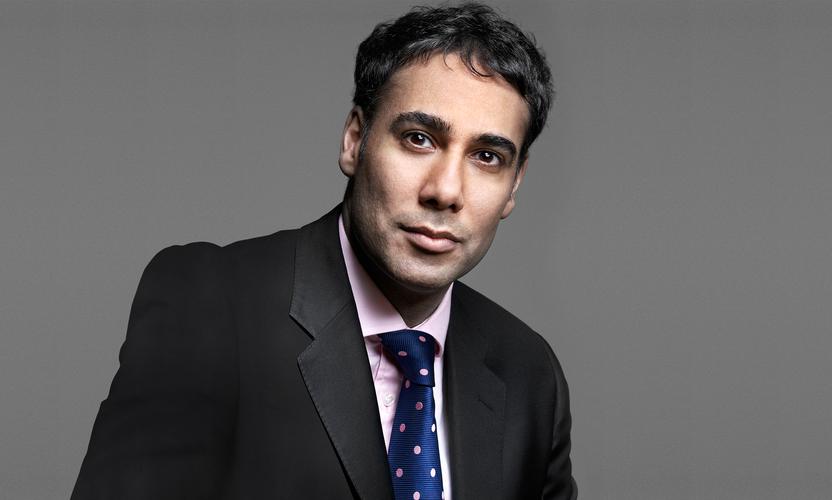Conventional wisdom has it that we are nearing the end of the party as far as the current cycle goes. Asset returns have been strong since the financial crisis. On the surface this would suggest a healthy degree of risk seeking has been taking place. But the punchbowl at this party is alcohol free.
Apart from some pockets within innovation sectors, notably in the US and China, exuberance has been thin on the ground. So it is the lack, rather than the presence, of euphoria that defines this cycle. In previous rallies, investors watched for the tipping point when justified enthusiasm collapsed into lunacy. When your granny conspiratorially urged you to buy shares in www.norevenues.com, you knew it was time to make for the exit.
But this time it really is different, at least for now. The current bull run in public markets appears to be characterised more by fear than greed. Investors have prioritised capital preservation at the expense of capital gains. The revelry that characterised the last gasp of previous rallies has been replaced with caution, too many investors having been burnt in the fire sales of the financial crisis.
The primacy of predictability
The goal of the capital preservationists has been to avoid those areas of the market with a high degree of uncertainty, around both short-term income and terminal value expectations. Those hugging bonds and low volatility equities are looking for assets with steady incomes and predictable outcomes. Cashflows weakly correlated with macro-related growth and strongly correlated with secular growth are especially attractive. The path of returns has become more important than the magnitude of returns for many investors.
Warren Buffet once said that he would rather earn a lumpy 15 per cent over time than a smooth 12 per cent. Such has been the volatility aversion in recent years that many investors would rather earn a smooth 4 per cent than a lumpy 15 per cent. They are not just risk averse but volatility averse. If a belief system holds for a long enough time it becomes self-fulfilling and nothing is more self-fulfilling than low volatility. If our starting belief is that certain assets are less volatile, as money flows to them then almost by definition they become less volatile. But lower volatility is not the same as lower risk. A good example of this is how investors have reframed their thinking around fixed income. Junk bonds in particular have lured investors with higher yields. It is true that yields have fallen across the board in the QE-wrought aftermath of the financial crisis, but the influx of money into some parts of the high yield market has lowered the spread between these bonds and the risk-free rate to a level that does not discount the realistic default potential at different points of the cycle. The volatility of returns may have fallen but the underlying risk remains.
The distrust of uncertainty
The fallout from the change in market psychology is this: if many investors have the same allocation preference, the price they must pay for that preference will rise. So the discount rate has fallen in areas that money has flowed into and risen in areas that are deemed less attractive. The ever-higher price we must pay for predictability means there is now an economic rent to take on the uncertainty that others do not want.
The clearest example of this is in emerging markets. Equities in emerging economies have underperformed on a relative basis over the last 10 years as investors have favoured the comparative safety of developed markets. Our own forecasts show earnings will grow significantly faster at companies in emerging markets than in developed markets over the next three years. Yet emerging market equities trade at a discount despite offering similar yields.
Total return indices in US dollars. Source: Refinitiv, Fidelity International, June 2019.
Total return indices in US dollars. Source: Refinitiv, Fidelity International, June 2019.
Until recently, US mega-cap tech stocks have seemed like a sure bet. Investors were confident these companies could widen their moats and carry on generating piles of cash. So their shares have become dearer, despite already lofty valuations, reinforcing investors’ trust in their ability to provide a relatively steady source of returns. Meanwhile value stocks have become cheaper and cheaper in the past 10 years.
Total return indices in US dollars. Source: Refinitiv, Fidelity International, June 2019.
But as with most things in life, a huge component of certainty is perception. Confidence in the tech story has been shaken by concerns about cyclicality, data privacy, tariffs and anti-trust regulation. Even business models are being questioned. The safe bet has been replaced with question marks, and the rapid reversal of sentiment shows the strength of the desire to avoid uncertainty.
The return of the weighting machine
The current asset price cycle has been driven largely by monetary policy. The fundamental quest for arbitrage between price and intrinsic worth has been subordinated to some extent by the greater fool theory, the idea that buying at high valuations does not matter so long as there is someone willing to buy at an even higher price in the future. So while central banks stay dovish and prices keep rising, investors feel relaxed paying richly for the security they desire. But as another famous value investor, Benjamin Graham, put it: “In the short term the market is a voting machine, in the long term it is a weighing machine.” In the long run, a strategy of investing at sensible valuations will prevail despite short-term distortions that can make expensive assets ever more overpriced. There are reasons to believe the bifurcation of certain and questionable might not continue for much longer.
Firstly, the uncertain times we live in are making the current trajectory harder to plot in an economic, political and regulatory context. Central bank actions are becoming harder to predict, especially as unconventional policies become a necessity as interest rates can fall no lower. This will make markets intrinsically more volatile, more range bound. I believe valuation will become the security blanket investors turn to when expected return or even where the near-term news flow will come from becomes difficult to predict.
Secondly, as noted, the current cycle is long in the tooth and however it does end, assets discounted by uncertainty look like a good bet. If growth reappears and a downturn is avoided, for example as a result of large scale fiscal investment, the riskier, currently unloved areas of the market should perform relatively strongly. And if we move into a period when asset prices come under pressure, the current preference for predictable assets should cause them to underperform - investors can only sell what they already own.
An appeal to optimism
Because of the behavioural tendencies of the last cycle, valuation has been a poor predictor of returns of late. Cheap assets, perceived as untrustworthy, have become cheaper, while expensive assets have become synonymous with quality and seen their value rise. That distinction has become extreme. The premium now offered to take on the uncertainty that others wish to avoid is compelling. I believe that embracing those areas of the market that offer higher but lumpy returns and taking a long-term view will ultimately be well rewarded. Areas where the uncertainty premium is highest include emerging markets, China, the UK and value versus growth in US equities, and Asia and China on the fixed income side.
Caution and pessimism have been in the ascendancy for the last 10 years. In many ways, looking to parts of the market that investors have been most nervous of is an expression of optimism, and there are reasons to believe this outlook will have its day again soon. The current (not very exciting) party may be ending, but for the adventurous, a new one may just be starting.









































